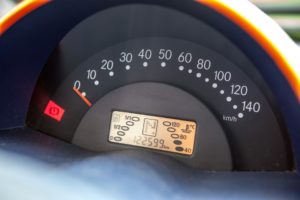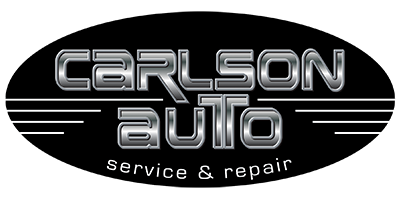
There is a lot of history when it comes to cars and the vehicles you drive. Have you ever stopped to think about your car’s check engine light? Where did it come from? Did all cars have them? You might be surprised to hear that it has a pretty fascinating backstory, dating to the 1930s. If you’re in the mood for a mini history lesson, stick around to learn something new.
How do check engine lights over History?
Before we travel back in time to the 1930s, let’s go over a few things. A check engine light is a computerized alert that activates when there’s an engine problem. It’s typically located on the dashboard and lights up in red or orange when it’s triggered. It’s usually shown as a picture of an engine, or as a phrase, such as “SERVICE ENGINE SOON”. If the light is visible but not blinking, it signifies a non-urgent issue. If the light is blinking, it means there’s an issue that needs immediate resolution. Once the check engine light goes off, your car’s computer saves a diagnostic trouble code, or DTC. This code helps our technicians at Carlson Auto get to the root of the problem.
Where did the idea of a check engine light come from in History?
In the days before the check engine light, there was a much simpler form called an idiot light (real name!), or warning light. The first manufacturer to use idiot lights was the Hudson Motor Company of Detroit, Michigan. After that, they started doing so in the early 1930s. This binary light only alerted drivers of major engine issues. They weren’t very helpful because they didn’t give much of a warning before the vehicle broke down. By the 1980s, most automakers phased out idiot lights in favor of more modern technology.
History of Manufacturer-specific check engine lights
By the early 1980s, auto manufacturers began producing vehicles with computerized engine controls. These cars had built-in diagnostic systems which triggered check engine lights when a problem was detected. As this new technology became more prevalent, idiot lights were discontinued to avoid confusion. The main problem with the check engine lights of the 1980s was that there were no standardization in place. Each manufacturer used their own system. That made it a lot harder for auto technicians to figure out what triggered the check engine light.
When was the check engine light standardized?
The check engine light as we know it didn’t come into existence in history until 1996. At that time, the federal government mandated an on-board vehicle diagnostics system called OBD2. This was a requirement for all new vehicles sold in the United States in an effort to reduce vehicle emissions. Since all new cars were now equipped with the same system, it allowed for the standardization of DTCs. These days, all vehicles, regardless of the make or model, can be diagnosed with a scan tool. This is a direct result of DTC standardization.
Luckily, our check engine lights have come a long way in history. Today’s diagnostics process is much more efficient, thanks to scan tool technology and a unified system of fault codes. In addition, modern check engine lights make us aware of minor vehicle issues before they get worse, saving both time and money on repairs.
That wraps up our brief history of the check engine light. The next time you notice it, be grateful it’s not an idiot light. Instead, think of it as your car’s way of telling you she needs some TLC, and give us a call.
8 Reasons Your Car’s Check Engine Light is On and What You Need to Do About It
Let’s be honest. No one likes seeing their check engine light. While it might be tempting to ignore, doing so will only lead to bigger problems down the road. Below are 8 of the most common reasons your check engine light (CEL) is on.
1. Loose or missing fuel cap
The purpose of your gas cap is to keep vapors from getting out of the gas tank. If the cap is loose, cracked, or missing, it’ll trigger the CEL. That’s because driving without a fuel cap can significantly increase emissions and reduce fuel efficiency. Luckily, replacing your fuel cap is super easy and cheap.
2. Spark plugs and spark plug wires
Spark plugs and spark plug wires light up the air and fuel mixture in your engine to create the combustion that produces power. If there’s an issue with this part, it can affect engine performance. Worst case scenario, it can cause your engine to stop running. Spark plugs are relatively inexpensive, and this is a minor issue as long as it’s addressed in a timely manner.
3. Battery
Your car’s battery provides the power needed to start your vehicle. In addition, it provides power for things like your lights and stereo when the engine is turned off. If the battery is faulty, it won’t send the right amount of energy to your car’s computer. This causes your CEL to turn on.
4. EGR valve
Your car’s EGR (exhaust gas recirculation) system controls your vehicle emissions. It does this by rerouting some gases from the exhaust back to the intake manifold. The EGR valve doesn’t require regular maintenance, but it can get clogged up with carbon build-up. In addition, when this starts to happen, the CEL gets activated. If ignored, this can lead to serious engine damage.
5. Oxygen sensor
The oxygen sensor monitors the gases involved in the combustion process. However, this is done to ensure the correct amount of oxygen is present. If the sensor isn’t working, your engine will end up burning more fuel than needed. This leads to lower fuel economy, meaning you’ll get fewer miles per gallon. If an oxygen sensor repair is delayed, it could cause problems with your catalytic converter or spark plugs. This can result in thousands of dollars in damages.
6. Catalytic converter
The catalytic converter turns carbon monoxide into carbon dioxide. However, an issue with spark plugs or the oxygen sensor can lead to a clog in the catalytic converter, preventing it from functioning properly. In addition, routine maintenance can prevent this, saving lots of time and money on repairs.
7. MAF failure
The mass air flow (MAF) sensor measures how much air enters the engine. This lets your car know how much fuel is needed to run efficiently. If this sensor is faulty, the CEL will turn on. Delaying replacement of this part can lead to reduced performance and fuel economy. It can also result in damage to other parts of your engine, like the catalytic converter, oxygen sensor, and spark plugs.
8. Vacuum leak
Cars have many vacuum lines. A vacuum line is a hose that carries a vacuum, which is a lack of air pressure. They’re made out of rubber, so they can stretch out or crack over time. However, when this happens, your car will detect a leak and activate your CEL.
As you can see, the check engine light can indicate a wide variety of issues. It’s in your best interest to get your car checked out as soon as a potential problem arises. Let our technicians at Carlson Auto help you figure out if it’s simple or serious. Give us a call at (651) 458-5158 for our Cottage Grove location, or (651) 578-0885 for our Maplewood location. We’re always here to help.
How to Troubleshoot a Check Engine Light Issue
No one wants to see their check engine light, but when it comes on, you need to know what to do. As you probably know, the CEL can indicate a wide variety of issues, from minor repairs to a major overhaul. Whatever you do, don’t ignore it! Let’s discuss what you can do to troubleshoot an engine issue activating your car’s check engine light.
Do I need to stop driving?
Your check engine light will appear on your dashboard either as a blinking light, or as a solid, illuminated light. If it’s blinking, it signifies a major issue. You need to pull over right away if this happens. If the check engine light is not blinking, it indicates a less serious issue. Although you can’t ignore it forever, you probably don’t need to stop driving.
No matter what version of the check engine light you’re seeing, use common sense. Observe what’s happening with your car. Do you notice anything out of the ordinary? Some common signs of serious engine troubles are loss of power, strange noises, and engine smoke. If you experience any of these, stop what you’re doing and pull over. Avoid driving your vehicle if you can, and get your car towed to a nearby service provider.
How to troubleshoot a check engine light
If you don’t have a major crisis, there are some ways you can try to resolve the issue yourself. For instance, One thing you can do is check your car’s oil dipstick. Make sure it’s properly sealed and that the oil fuel cap is tightened. These simple fixes can deactivate your check engine light, sending you on your way. Another place to check is your gas tank. Believe it or not, a loose fuel cap can trigger the check engine light. Double-check to make sure your fuel cap is tightened, because the light may turn on as a result of this. This easy fix could be all you need to do to turn off the check engine light.
Another option to consider is buying an OBD2 scanner. This gadget reads DTCs (diagnostic trouble codes) that your car’s computer saves. These codes get saved by the diagnostics system when the check engine light turns on. In addition, connect the OBD2 scan tool to the data link connector, which is found beneath the dashboard on the driver’s side.
OBD2 Scanner
Good OBD2 scanners can cost anywhere from $50 to $100. Although OBD2 scanners can point you in the right direction, they won’t tell you everything you need to know. However, by reading the DTCs, you can get a pretty good idea of the severity of your problem. Knowing this can help you decide how to move forward with repairs. Seeing your check engine light can be worrisome, but don’t panic. Try to stay calm and observe your surroundings. Stay safe, and pull over right away if you think you have a big problem.
For all of your auto services, Carlson Auto is committed to you. You can request an appointment online, or by phone. You can reach us at (651) 458-5158 for our Cottage Grove Location, or (651) 578-0885 for our Maplewood location. We look forward to seeing you soon.
